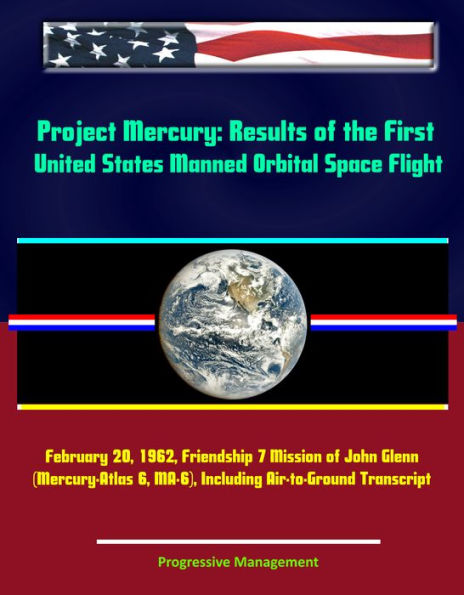This official NASA history document - converted for accurate flowing-text e-book format reproduction - presents the results of the first United States manned orbital space flight conducted on February 20, 1962, and includes a complete minute-by-minute air-to-ground transcript, along with John Glenn's flight report. On that historic day, an Atlas rocket successfully carried astronaut Glenn and the hopes of an entire nation into orbit aboard Friendship 7, a flight that ushered in a new era of space travel that eventually led to Americans walking on the moon by the end of the 1960s. Glenn was soon followed into orbit by colleagues Carpenter, Schirra and Gordon Cooper. Their fellow Mercury astronauts Alan Shepard and Virgil "Gus" Grissom flew earlier suborbital flights.
Contents of this report: Operation Requirements And Plans * Spacecraft And Spacecraft Systems * Life Support Systems And Biomedical Instrumentation * Launch Complex Checkout And Launch-Vehicle Systems * Spacecraft Preparation And Checkout * Flight Control And Flight Plan * Recovery Operations * Aeromedical Preparation And Results Of Postflight Medical Examinations * Physiological Responses Of The Astronaut * Astronaut Preparation * Pilot Performance * Pilot's Flight Report * Summary Of Results * Appendix A. Mercury Network Performance Summary For MA-6 * Appendix B. Air-Ground Communications Of The MA-6 Flight * Appendix C. Description Of The MA-6 Astronomical, Meteorological, And Terrestrial Observations * Appendix D. Preliminary Report On The Results Of The MA-6 Flight In The Field Of Space Science.
In his report, Glenn writes: Weightless flight was quickly adapted to, and was found to be pleasant and without discomfort. The chances of mission success are greatly enhanced by the presence of a human crew in the spacecraft. A human crew is vital to future space missions for the purpose of intelligent observation and actions when the spacecraft encounters expected or unexpected occurrences or phenomena.
Of major significance is the probability that much more dependence can be placed on the man as a reliably operating portion of the man-spacecraft combination. In many areas his safe return can be made dependent on his own intelligent actions. Although a design philosophy could not be followed up to this time, Project Mercury never considered the astronaut as merely a passive passenger.
These areas must be assessed carefully, for man is not infallible, as we are all acutely aware. As an inflight example, some of you may have noticed a slight discrepancy between launch photographs of the pilot and similar reentry views. The face plate on the helmet was open during the reentry phase. Had cabin pressure started to drop, I could have closed the face plate in sufficient time to prevent decompression, but nevertheless a face-plate-open reentry was not planned.
On the ground, some things would also be done differently. As an example, I feel it more advisable in the event of suspected malfunctions, such as the heat-shield-retropack difficulties, that require extensive discussion among ground personnel to keep the pilot updated on each bit of information rather than waiting for a final clearcut recommendation from the ground. This keeps the pilot fully informed if there would happen to be any communication difficulty and it became necessary for him to make all decisions from onboard information.
Many things would be done differently if this flight could be flown over again, but we learn from our mistakes. I never flew a test flight on an airplane that I didn't return wishing I had done some things differently. Even where automatic systems are still necessary, mission reliability is tremendously increased by having the man as a backup. The flight of Friendship 7 is a good example. This mission would almost certainly not have completed its three- orbits, and might not have come back at all, if a man had not been aboard.



